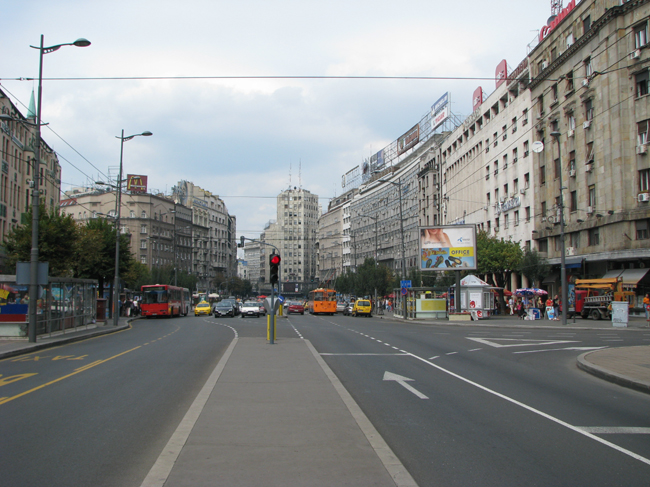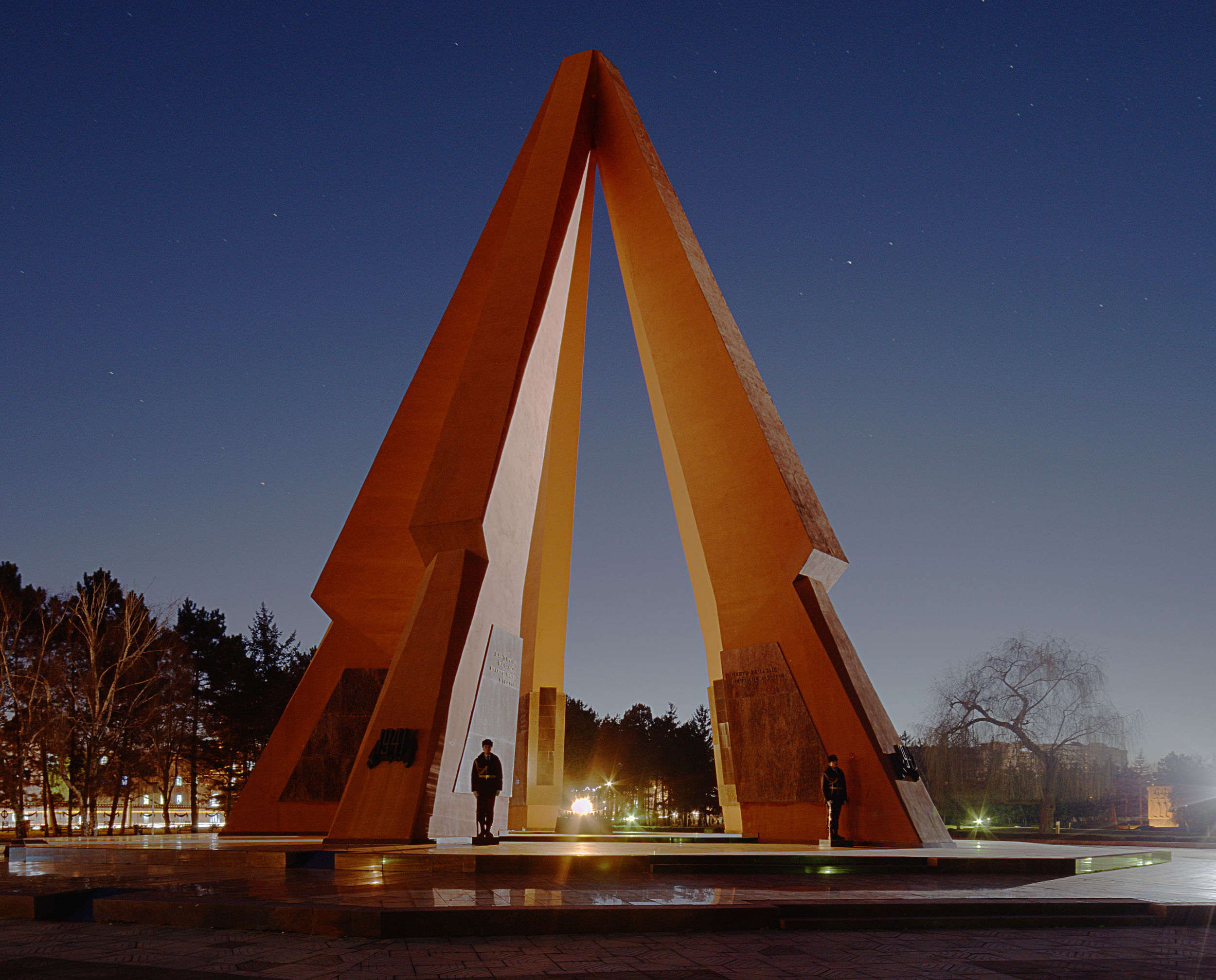|
Janićije Đurić
Janićije Dimitrijević Đurić (177914April 1850), also spelled Janićije Djurić, was the secretary of Karađorđe Petrović, a member of the Governing State Council and the president of the Court of Appeals. Karađorđe's secretary Janićije Đurić was born in 1779 in Stragari in the Kragujevac nahiye. He was a friend of Tanasko Rajić when his sister Perunika married. He was educated in the monastery of the Annunciation in Rudnik. He joined the insurgents at the very beginning of the First Serbian Uprising in 1804.When Tanasko Rajić heard about the upcoming Orašac Assembly, he took his men and Janićije Đurić and went to the Stragari ''han'' (inn) where they killed the innkeeper (''hanadžija'') and razed the inn to the ground. Janićije Đurić participated in the Orašac Assembly on 14 February 1804.Karađorđe was elected supreme leader (''Vožd''), and Janićije Đurić was elected his secretary, which he remained until the collapse of the First Serbian Uprising. He ... [...More Info...] [...Related Items...] OR: [Wikipedia] [Google] [Baidu] |
Zasavica (bog)
The Zasavica ( sr-Cyrl, Засавица) is a bog in the region of Mačva, west central Serbia. It is a major wildlife refuge and one of the last authentically preserved wetlands in Serbia. In the 2000s it became a popular attraction with the successful reintroduction of beavers, which had become extinct on the same land areas 100 years before. Location Zasavica is located several kilometers across the Sava River from the town of Sremska Mitrovica. The entire Zasavica system is located in the Mačva region and is administratively divided between the province of Vojvodina (northern part; municipality of Sremska Mitrovica) and Central Serbia (southern part; municipality of Bogatić). It roughly extends between the settlements of Crna Bara (Bogatić), Crna Bara, Banovo Polje, Ravnje (Sremska Mitrovica), Ravnje, Zasavica I, Zasavica II, Salaš Noćajski, Noćaj and Mačvanska Mitrovica. Geography The Zasavica bog is a marshy Upland and lowland (freshwater ecology), lowland in ... [...More Info...] [...Related Items...] OR: [Wikipedia] [Google] [Baidu] |
Voljavča
Voljavča ( sr-cyr, Вољавча) is a Serbian Orthodox monastery situated in a dense forest near the Voljavča creek on the northeastern slope of the Rudnik (mountain), Rudnik, near the village of Stragari in central Serbia. The monastery church, dedicated to saints Michael and Gabriel, was an endowment of Mihailo Končinović, a nobleman of Despot Stefan Lazarević (r. 1402–27), reconstructed at the beginning of the 15th century on the ruins of an older church dating to 1050. The monastery is of great historical importance due to its role during the First Serbian Uprising, when the Upspring leader, Karađorđe often hid there. In the residential part of the monastery, built in 1765. was held the first meeting of the Serbian Minister Council ( sr-cyr, Правитељствујушчи совјет сербски), first executive governing organ in the history of the modern Serbian state, History of modern Serbia. Notable people *Hadži-Ruvim References Sources * * ... [...More Info...] [...Related Items...] OR: [Wikipedia] [Google] [Baidu] |
Toma Vučić-Perišić
Toma or TOMA may refer to: Places * Toma, Burkina Faso, a town in Nayala province * Toma Department, a department in Nayala province * Toma, Banwa, Burkina Faso, a town * Tōma, Hokkaidō, Japan, a town ** Tōma Station, its railway station *Toma, a town in East New Britain, Papua New Guinea People *Toma (name), list of people with this name *Loma people or Toma, an ethnic group from border region between Guinea and Liberia ** Loma language * ToMa, Croatian singer Music and television * ''Toma'' (TV series), an American series * "Toma" (song), by rapper Pitbull *"Toma" (song), by artist Puscifer *"Toma" (song), by artist Ivy Queen Other uses * La Toma, a 1598 assertion of Spanish possession of land north of Rio Grande * Siege of Toma, a military action in 1914 in German New Guinea * Texas Open Meetings Act * Theatre Orchestra Musicians Association (TOMA), part of the Media, Entertainment and Arts Alliance The Media, Entertainment & Arts Alliance (MEAA) is the Australian ... [...More Info...] [...Related Items...] OR: [Wikipedia] [Google] [Baidu] |
Terazije
Terazije ( sr-Cyrl, Теразијe) is the central town square and the surrounding neighborhood of Belgrade, Serbia. It is located in the municipality of Stari Grad, Belgrade, Stari Grad. Today, Terazije has primarily function of the main transit square, surrounded by the important public buildings, cultural institutions, hotels, public monuments and parks. Though not classically shaped square, Terazije was historically important as the gathering spot and the former business and commercial center of Belgrade. With the Knez Mihailova Street, which extends to the northeast connecting directly Terazije and Belgrade Fortress, the square is one of the oldest and most recognizable ambience units of Belgrade. Due to its historical and cultural importance, Terazije was declared a protected spatial cultural-historical unit in January 2020. Location Despite the fact that many Belgraders consider the Republic Square (Belgrade), Republic Square or Kalemegdan to be the city's centerpiece ... [...More Info...] [...Related Items...] OR: [Wikipedia] [Google] [Baidu] |
Milenko Stojković
Milenko Stojković ( sr-cyr, Миленко Стојковић; 1769, Kličevac, Požarevac – 1831, Bakhchysarai, Crimea) was a Serbian revolutionary and '' bimbaša'' in the First Serbian Uprising early in the 19th century. He is most famous for executing four dahije (renegade janissaries) tyrants during the start of the First Serbian Uprising, in vengeance for the " Slaughter of the Knezes". Having apprehended and, while running away, Milenko executed the Turkish tyrants Aganlija, Kučuk Alija, Mula Jusuf, and Mehmed Fočić, responsible for the killing of Serbian Princes that triggered the First Serbian Uprising, on the island of Ada Kaleh on the River Danube The Danube ( ; see also #Names and etymology, other names) is the List of rivers of Europe#Longest rivers, second-longest river in Europe, after the Volga in Russia. It flows through Central and Southeastern Europe, from the Black Forest sou .... He was also known for keeping a harem of Muslim wo ... [...More Info...] [...Related Items...] OR: [Wikipedia] [Google] [Baidu] |
Petar Dobrnjac
Petar Teodorović ( sr-cyr, Петар Теодоровић; 1771–1831), known as Petar Dobrnjac (Петар Добрњац) was a Serbian Vojvoda in the First Serbian Uprising. He was born in the Požarevac nahija, in the village of Dobrnje, Petrovac. In his youth, he was a hajduk, and later a trader in farm animals. He had a brother Stevan Dobrnjac who with Marko Todorović launched a short-lived revolt against Miloš Obrenović in 1821. Role in the Uprising In 1804, the year of the First Serbian Uprising, he was a Buljubaša, the commander of a četa (company), under Milenko Stojković. In 1805 he took part in the Battle of Ivankovac against Hafuz Pasha. On his initiative Serbs came to the idea to fortify themself in the battle which proved crucial for Serbian victory. Afterwards, the Governing Council-''Soviet'' (''Правитељствујушчи совјет'') awarded him the rank of Bimbaša (a commander of 1000 men) and Vojvoda. After the Battle of Deli ... [...More Info...] [...Related Items...] OR: [Wikipedia] [Google] [Baidu] |
Luka Lazarević
Luka Lazarević ( sr-cyr, Лука Лазаревић; 1774–1852), known as Pop-Luka (), was a Serbian Orthodox priest and ''vojvoda'' (commander) that participated in the First Serbian Uprising (1804–13) of the Serbian Revolution against the Ottoman Empire. Ordained as a priest at a relatively young age, Lazarević was described as a lively, gun-wearing horseman who joined the Serbian rebels in their fight against the renegade Janissaries (Dahije) to avenge his cousin. He quickly showed prowess and by the time the uprising against the Ottomans had begun he was chosen as the commander of a unit in western Serbia. Participating in all notable battles in that region, the Ottoman suppression forced him and other leaders to flee the country. He returned to Serbia in 1832 after many years in Russia, and worked for the Serbian government (now autonomous) in his late years. Early life Lazarević was born in Svileuva, in the Šabac ''nahiya'' of the Sanjak of Smederevo (now Serbia). ... [...More Info...] [...Related Items...] OR: [Wikipedia] [Google] [Baidu] |
Jakov Nenadović
Jakov Nenadović ( sr-cyr, Јаков Ненадовић; 1765–1836) was a Serbian voivode and politician who served as the Prime Minister of Serbia, prime minister of Serbia from 31 December 1810 to 22 January 1811. He was the first Serbian interior minister. Nenadović was the most influential figure in Serbia at the time beside Karađorđe, his greatest rival, and Janko Katić. Life Jakov was the younger brother of Aleksa Nenadović (1749–1804), a Serbian nobleman who held a province around Valjevo. He was grandnephew of Grigorije Nenadović, metropolitan of Raška, Serbia, Raška and Valjevo. His brother was executed in the Slaughter of the Dukes on January 31, 1804, which sparked the First Serbian Uprising. Jakov immediately joined the Serbian rebels, and after the victory in Svileuva (1804) he became one of the most distinguished commanders and persons of western Serbia. He acquired his ammunitions and weapons from Syrmia, then part of Austria. In March 1804, he attacke ... [...More Info...] [...Related Items...] OR: [Wikipedia] [Google] [Baidu] |
Chișinău
Chișinău ( , , ; formerly known as Kishinev) is the Capital city, capital and List of cities and towns in Moldova, largest city of Moldova. The city is Moldova's main industrial and commercial centre, and is located in the middle of the country, on the river Bîc, a tributary of the Dniester. According to the results of the 2014 Moldovan census, 2014 census, the city proper had a population of 532,513, while the population of the Municipality of Chișinău (which includes the city itself and other nearby communities) was 700,000. Chișinău is the most economically prosperous locality in Moldova and its largest transportation hub. Nearly a third of Moldova's population lives in the metro area. Moldova has a Moldovan wine, history of winemaking dating back to at least 3,000 BCE. As the capital city, Chișinău hosts the yearly national wine festival every October. Though the city's buildings were badly damaged during the World War II, Second World War and earthquakes, a rich a ... [...More Info...] [...Related Items...] OR: [Wikipedia] [Google] [Baidu] |
Bessarabia
Bessarabia () is a historical region in Eastern Europe, bounded by the Dniester river on the east and the Prut river on the west. About two thirds of Bessarabia lies within modern-day Moldova, with the Budjak region covering the southern coastal region and part of the Ukrainian Chernivtsi Oblast covering a small area in the north. In the late 14th century, the newly established Principality of Moldavia encompassed what later became known as Bessarabia. Afterward, this territory was directly or indirectly, partly or wholly controlled by: the Ottoman Empire (as suzerain of Moldavia, with direct rule only in Budjak and Khotyn), the Russian Empire, Romania, the USSR. In the aftermath of the Russo-Turkish War (1806–1812), and the ensuing Treaty of Bucharest (1812), Peace of Bucharest, the eastern parts of the Moldavia, Principality of Moldavia, an Ottoman Empire, Ottoman vassal state, vassal, along with some areas formerly under direct Ottoman rule, were ceded to Imperial Russ ... [...More Info...] [...Related Items...] OR: [Wikipedia] [Google] [Baidu] |
Hotin
Khotyn (, ; , ; see other names) is a city in Dnistrovskyi Raion, Chernivtsi Oblast of western Ukraine, located south-west of Kamianets-Podilskyi. It hosts the administration of Khotyn urban hromada, one of the hromadas of Ukraine. According to the 2001 Ukrainian census, it has a population of 11,124. Current population: Khotyn, first chronicled in 1001, is located on the right (southwestern) bank of the Dniester River, and is part of the historical region Bessarabia. Important architectural landmarks within the city include the Khotyn Fortress, constructed in the 13-15th centuries (new fortress started in 1325, major improvements in the 1380s and 1460s), and two 15th century constructions by Moldavia's ruler Stephen the Great: the Prince's Palace (''Palatul Domnesc'') and the city's clock tower. Historically, the town was part of the Kievan Rus' and the Galicia–Volhynia Principality (from its foundation to 1359), Principality of Moldavia, and the Polish–Lithuanian Comm ... [...More Info...] [...Related Items...] OR: [Wikipedia] [Google] [Baidu] |





